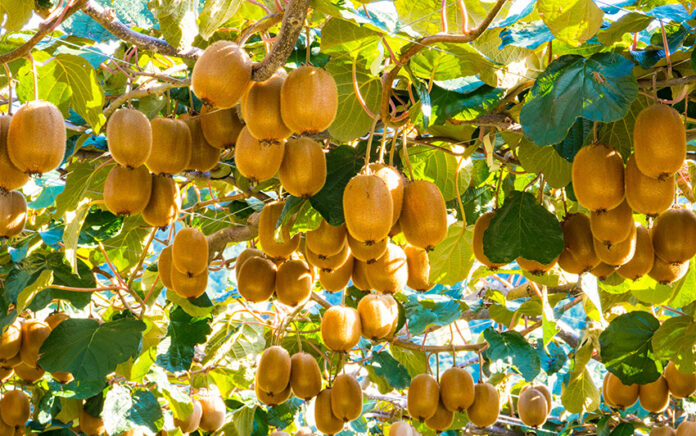The days of New Zealand continuing to expand its dairy footprint are largely
coming to a close. Marginal land is increasingly looking unviable for
large scale dairy conversions. – Che Charteris.
Craigmore Sustainable’s decision to convert 137 hectares from dairy to kiwifruit orchards is a clear indication that major farming interests are preparing for change. The farm investment specialist announced yesterday it will spend $38 million on the conversion of a Kerikeri property and, when complete, will increase local kiwifruit production by more than a third.
The move is a result of recent approval from the Overseas Investment Office to purchase land in Hawke’s Bay and Gisborne, where Craigmore is investing $52 million in apple orchard development, creating almost 100 full-time equivalent jobs alongside a $30 million boost in exports.
At Kerikeri, conversion is expected to result in permanent employment for 29 people.
The company’s chief executive, Che Charteris says these investments are part of the company’s Permanent Crop business which is expanding and diversifying horticultural developments into key central and northern regions.
“New Zealand’s horticulture sector is a world leader in many areas, with exports growing at 7% per annum for the past 20 years, bringing with it increased regional development and employment.
“Our focus is to build the best New Zealand orchards producing top-selling fruits that include kiwifruit, apples, wine grapes, plus emerging crops such as cherries and avocados.”
Although Craigmore’s is still heavily involved in traditional farming Charteris notes that, with the Kerikeri property, they’ll generate “10 times the benefits by farming only half the land.”
In Kerikeri the plan is to plant riparian areas around the orchards with indigenous species to provide a buffer to waterways from sediment, nutrient and other runoff and to provide corridors for wildlife movement.
“This is helping diversify the economy and create significant gains for regional communities as well as helping address soil and water challenges and reduce greenhouse gas emissions,” Charteris says.
About 70 ha of 137 ha Kerikeri property will be used for kiwifruit, with the remainder to be used for environmental protection and biodiversity enhancement, he said.
“Ultimately, at a time of growing consumer demands for sustainable products and wider societal standards for managing farmland, Craigmore Sustainables’ mission is to support New Zealand’s reputation as a premium food and fibre supplier in a way that spreads the benefits across the regions of Aotearoa.”
Craigmore Sustainables is a New Zealand owned and controlled business, established to help fund the development and grow regional New Zealand food and fibre businesses.
While it predominantly uses European funding sources, all management and control is deferred to Craigmore, which appoints and employs local New Zealand management and governance for every business.
Overall, Craigmore manages dairy, grazing, forestry and horticultural properties spread throughout the country and covering more than 15,000 hectares.
The change also comes at a time when New Zealand conversions to dairy have all but ground to a halt, with some farms now reverting to previous uses.
A forerunner to the change came in 2016 when Landcorp, New Zealand’s largest dairy farmer, announced intentions to sharply scale back its plans to convert thousands of hectares of forest near Taupo to dairy farms because of financial and environmental concerns.
The company cited the low dairy payout, the heavy capital requirements for the conversions and environmental concerns about nitrate leaching into the Waikato River catchment as the primary causes for its decision.
Still, chief executive Steve Carden said Landcorp would now only increase its dairy herds on its massive 25,723-hectare Wairakei Estate from around 17,000 cows currently to between 22,000 to 23,000, rather than the originally planned increase of up to 40,000.
At the time Carden noted his concern about growing “volatility” in the dairy sector.
He said Landcorp was now finding it difficult to find land for dairy conversion that was both economically and environmentally sustainable.
“It’s a struggle for everyone. The days of New Zealand continuing to expand its dairy footprint are largely coming to a close. The more marginal land — of which the land around the central plateau is one — is increasingly looking unviable for large scale dairy conversions,” he said.
“The financials make it challenging by virtue of both the volatility in dairy returns and dairy farm prices still remaining very high. The environmental piece is probably the most challenging and what we’re trying to do with this land use change is be proactive about where we see the environmental restrictions going and consumer expectations going and trying to get ahead of them.”






